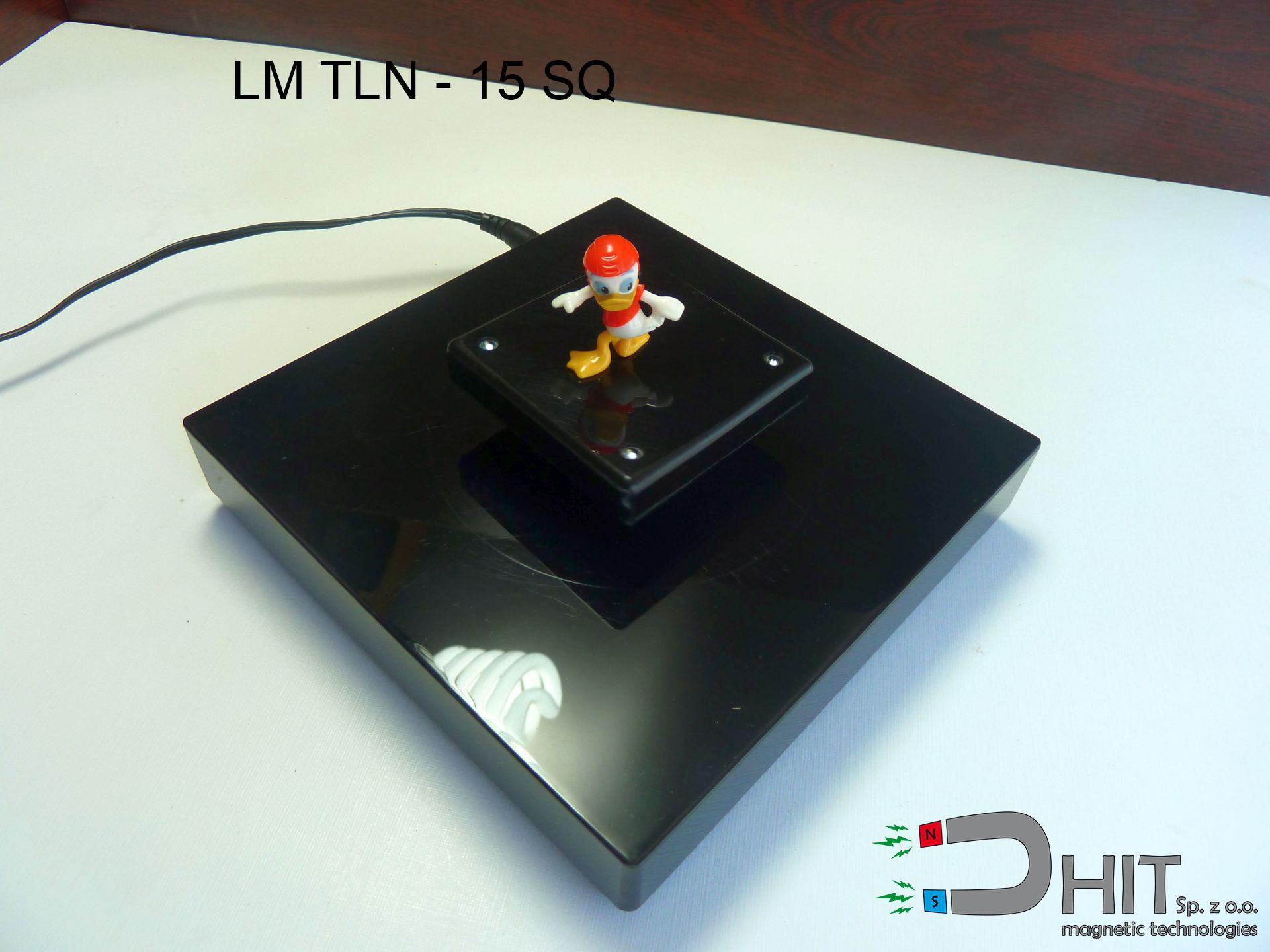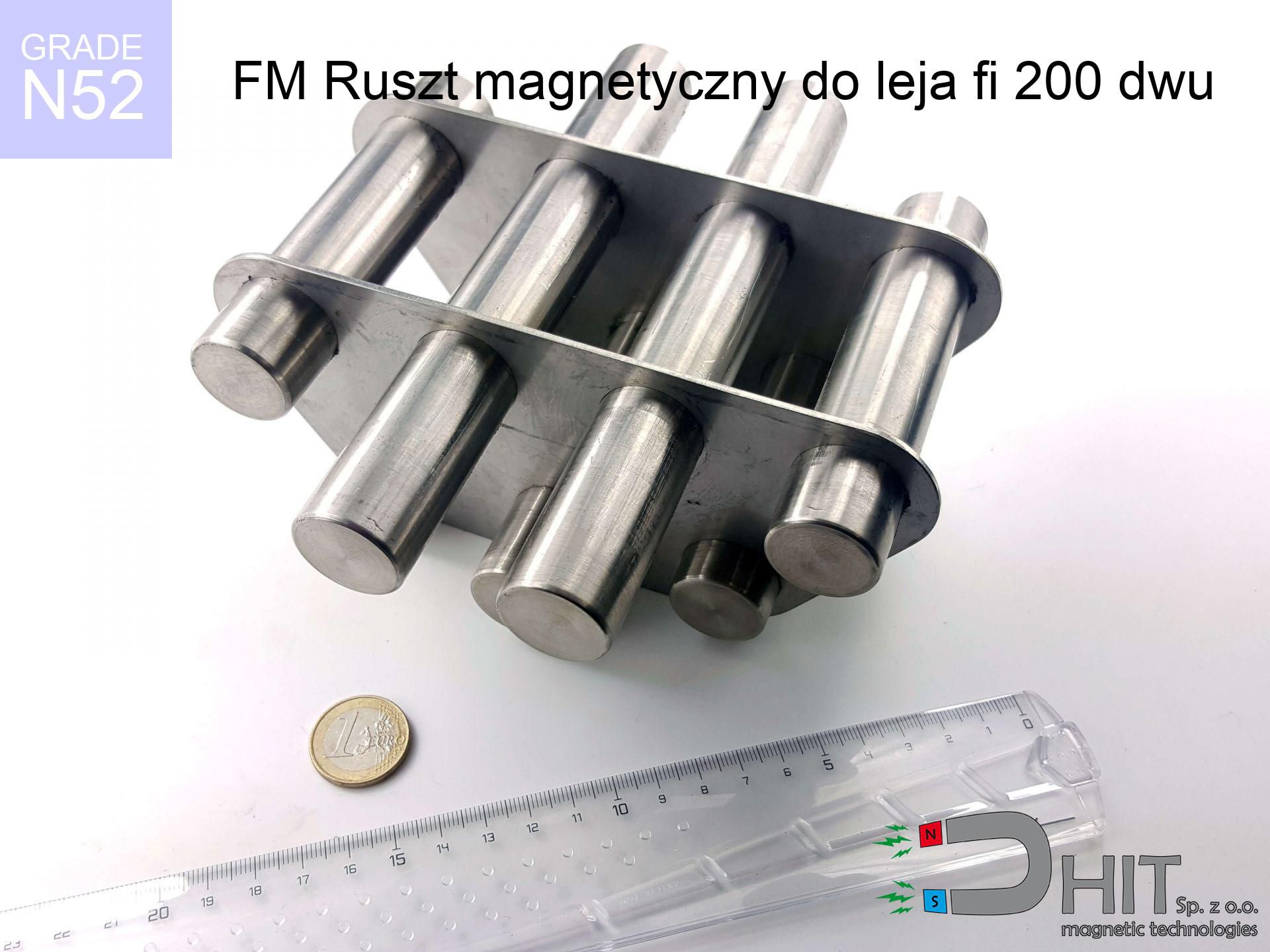LM TLN - 15 SQ / N38 - magnetic leviton
magnetic leviton
Catalog no 290493
GTIN/EAN: 5906301814511
Weight
1000 g
Pick up the phone and ask
+48 22 499 98 98
alternatively drop us a message via
request form
through our site.
Parameters as well as shape of magnetic components can be calculated using our
modular calculator.
Same-day processing for orders placed before 14:00.
Technical of the product - LM TLN - 15 SQ / N38 - magnetic leviton
Specification / characteristics - LM TLN - 15 SQ / N38 - magnetic leviton
| properties | values |
|---|---|
| Cat. no. | 290493 |
| GTIN/EAN | 5906301814511 |
| Production/Distribution | Dhit sp. z o.o. |
| Country of origin | Poland / China / Germany |
| Customs code | 85059029 |
| Weight | 1000 g |
| Manufacturing Tolerance | ±1 mm |
Magnetic properties of material N38
| properties | values | units |
|---|---|---|
| remenance Br [min. - max.] ? | 12.2-12.6 | kGs |
| remenance Br [min. - max.] ? | 1220-1260 | mT |
| coercivity bHc ? | 10.8-11.5 | kOe |
| coercivity bHc ? | 860-915 | kA/m |
| actual internal force iHc | ≥ 12 | kOe |
| actual internal force iHc | ≥ 955 | kA/m |
| energy density [min. - max.] ? | 36-38 | BH max MGOe |
| energy density [min. - max.] ? | 287-303 | BH max KJ/m |
| max. temperature ? | ≤ 80 | °C |
Physical properties of sintered neodymium magnets Nd2Fe14B at 20°C
| properties | values | units |
|---|---|---|
| Vickers hardness | ≥550 | Hv |
| Density | ≥7.4 | g/cm3 |
| Curie Temperature TC | 312 - 380 | °C |
| Curie Temperature TF | 593 - 716 | °F |
| Specific resistance | 150 | μΩ⋅cm |
| Bending strength | 250 | MPa |
| Compressive strength | 1000~1100 | MPa |
| Thermal expansion parallel (∥) to orientation (M) | (3-4) x 10-6 | °C-1 |
| Thermal expansion perpendicular (⊥) to orientation (M) | -(1-3) x 10-6 | °C-1 |
| Young's modulus | 1.7 x 104 | kg/mm² |
Material specification
| iron (Fe) | 64% – 68% |
| neodymium (Nd) | 29% – 32% |
| boron (B) | 1.1% – 1.2% |
| dysprosium (Dy) | 0.5% – 2.0% |
| coating (Ni-Cu-Ni) | < 0.05% |
Sustainability
| recyclability (EoL) | 100% |
| recycled raw materials | ~10% (pre-cons) |
| carbon footprint | low / zredukowany |
| waste code (EWC) | 16 02 16 |
Other offers
Advantages as well as disadvantages of Nd2Fe14B magnets.
Pros
- Their strength is maintained, and after approximately 10 years it decreases only by ~1% (theoretically),
- Neodymium magnets are characterized by extremely resistant to demagnetization caused by magnetic disturbances,
- Thanks to the elegant finish, the surface of nickel, gold-plated, or silver-plated gives an clean appearance,
- They feature high magnetic induction at the operating surface, which affects their effectiveness,
- Neodymium magnets are characterized by very high magnetic induction on the magnet surface and can function (depending on the form) even at a temperature of 230°C or more...
- Due to the possibility of precise forming and customization to individualized needs, magnetic components can be manufactured in a broad palette of geometric configurations, which increases their versatility,
- Significant place in high-tech industry – they are commonly used in magnetic memories, brushless drives, precision medical tools, as well as modern systems.
- Relatively small size with high pulling force – neodymium magnets offer strong magnetic field in small dimensions, which makes them useful in small systems
Limitations
- To avoid cracks upon strong impacts, we recommend using special steel housings. Such a solution secures the magnet and simultaneously improves its durability.
- NdFeB magnets demagnetize when exposed to high temperatures. After reaching 80°C, many of them experience permanent weakening of power (a factor is the shape and dimensions of the magnet). We offer magnets specially adapted to work at temperatures up to 230°C marked [AH], which are extremely resistant to heat
- They oxidize in a humid environment. For use outdoors we recommend using waterproof magnets e.g. in rubber, plastic
- Due to limitations in producing threads and complicated forms in magnets, we propose using cover - magnetic mechanism.
- Possible danger related to microscopic parts of magnets pose a threat, in case of ingestion, which becomes key in the context of child health protection. Additionally, small elements of these devices are able to disrupt the diagnostic process medical in case of swallowing.
- Due to neodymium price, their price is relatively high,
Holding force characteristics
Maximum lifting force for a neodymium magnet – what contributes to it?
- on a block made of structural steel, optimally conducting the magnetic flux
- whose thickness equals approx. 10 mm
- characterized by even structure
- with total lack of distance (no coatings)
- for force acting at a right angle (pull-off, not shear)
- at temperature approx. 20 degrees Celsius
Impact of factors on magnetic holding capacity in practice
- Air gap (between the magnet and the metal), since even a microscopic clearance (e.g. 0.5 mm) leads to a decrease in force by up to 50% (this also applies to paint, corrosion or dirt).
- Pull-off angle – note that the magnet has greatest strength perpendicularly. Under sliding down, the capacity drops significantly, often to levels of 20-30% of the maximum value.
- Substrate thickness – to utilize 100% power, the steel must be sufficiently thick. Paper-thin metal restricts the lifting capacity (the magnet "punches through" it).
- Plate material – low-carbon steel attracts best. Alloy steels decrease magnetic permeability and lifting capacity.
- Smoothness – full contact is possible only on polished steel. Any scratches and bumps create air cushions, reducing force.
- Operating temperature – NdFeB sinters have a negative temperature coefficient. At higher temperatures they are weaker, and in frost gain strength (up to a certain limit).
Lifting capacity testing was carried out on a smooth plate of suitable thickness, under perpendicular forces, however under attempts to slide the magnet the load capacity is reduced by as much as 5 times. Moreover, even a minimal clearance between the magnet and the plate reduces the lifting capacity.
H&S for magnets
Fire warning
Dust generated during machining of magnets is combustible. Avoid drilling into magnets without proper cooling and knowledge.
Keep away from children
Strictly keep magnets out of reach of children. Risk of swallowing is high, and the consequences of magnets connecting inside the body are life-threatening.
Fragile material
Beware of splinters. Magnets can explode upon uncontrolled impact, ejecting shards into the air. Eye protection is mandatory.
Physical harm
Large magnets can crush fingers instantly. Do not put your hand betwixt two strong magnets.
Magnetic media
Intense magnetic fields can destroy records on credit cards, HDDs, and other magnetic media. Stay away of at least 10 cm.
Respect the power
Be careful. Rare earth magnets act from a long distance and snap with massive power, often quicker than you can move away.
Phone sensors
Note: neodymium magnets generate a field that confuses precision electronics. Maintain a safe distance from your phone, tablet, and navigation systems.
Pacemakers
People with a ICD should maintain an safe separation from magnets. The magnetic field can interfere with the functioning of the implant.
Heat sensitivity
Keep cool. Neodymium magnets are sensitive to temperature. If you need operation above 80°C, inquire about special high-temperature series (H, SH, UH).
Warning for allergy sufferers
Warning for allergy sufferers: The Ni-Cu-Ni coating contains nickel. If redness appears, cease working with magnets and use protective gear.



![SM 25x325 [2xM8] / N52 - magnetic separator SM 25x325 [2xM8] / N52 - magnetic separator](https://cdn3.dhit.pl/graphics/products/sm-25x325-2xm8-bit.jpg)

![AM ucho małe [M8] - magnetic accessories AM ucho małe [M8] - magnetic accessories](https://cdn3.dhit.pl/graphics/products/am-ucho-małe-m8-zud.jpg)


